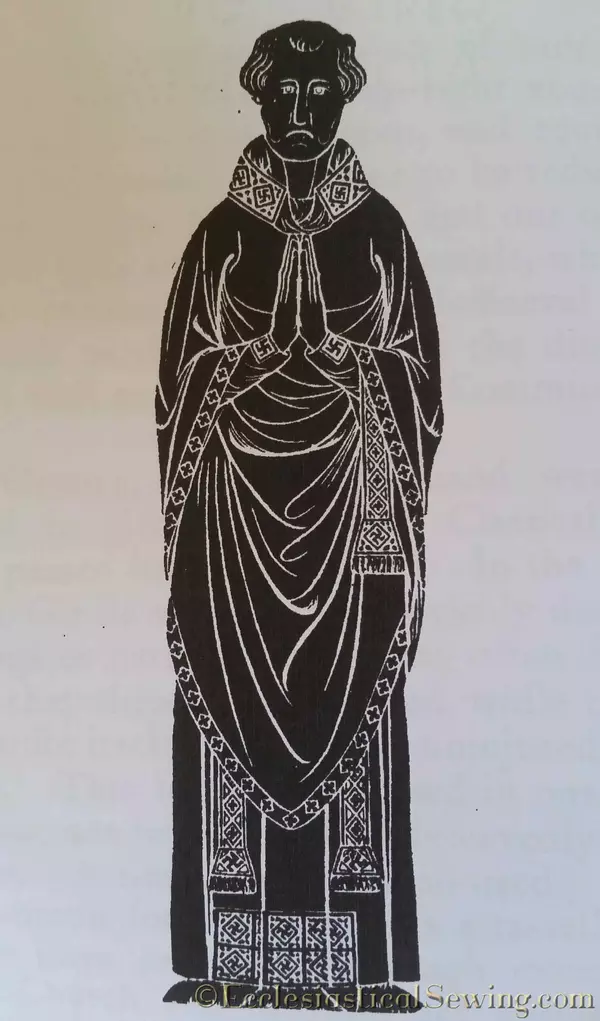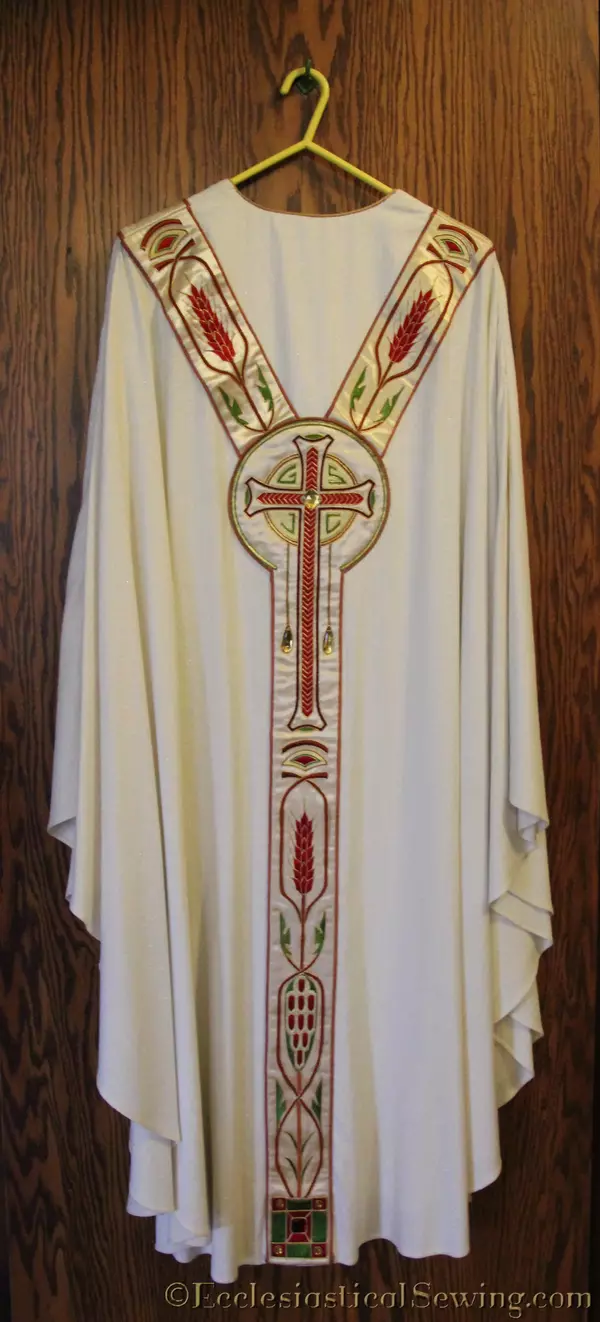The Chasuble Percy Dearmer
The Chasuble Percy Dearmer
The Chasuble Percy Dearmer: Did you ever look at a poncho and think that it reminded you of something familiar? We know that the poncho, a Spanish garment, originated in Spain and today is seen in South America as a legacy of that old European nation. However, we can trace the origins of this garment even further back to the church vestment known as the chasuble or paenula.
1Dearmer, Percy. Paenula Plate 11. 2015. The Ornaments of the Ministers. London, England: Forgotten Books, 2015.
Paenula
The paenula was a type of cloak, common in the ancient world for protection against the elements. Its circular shape marked the paenula, falling around the wearer’s body in a protective cloak-like manner. The first mention we have of a paenula being used as an ecclesiastical garment comes from 2 Timothy 4:13. Paul is here asking Timothy to bring his traveling cloak, a paenula, that he had left in Troas.
2Brunswick, St. Ambrose’s Catholic Parish. Ambrose Mosaic Milan Basilica. Basilica of Sant’Ambrogio, Milan, Italy. August 18th, 2016. http://www.stambroseparish.org.au/st-ambrose.htm
St. Ambrose and Clerical Vestments
Above we see the mosaic of St. Ambrose, constructed shortly after he died in 397 A.D. He is wearing an alb, a dalmatic, a paenula, and shoes. This beautiful piece is considered to be a good likeness, owing to how quickly it was created after the bishop’s death. If any of my dear readers can travel to Milan, do stop in the Basilica di Sant’Ambrogio and find this mosaic. Also see the skeletal remains of St. Ambrose, arrayed in ecclesiastical finery.
A larger, floor-length, paenula has been known as an amphilbalus or a casula–derived from the word for house. The sight of a bishop or priest in old images always shows these officers arrayed in a large chasuble. The laypeople, however, still would have worn such a garment, although possibly a less cumbersome version that was shorter. St. Gregory the Great, for instance, had a picture of himself and his parents. All three are decked in dalmatics and chasubles. We can mark the Bishop by the Pallium, the Gospels in his hand, and his tonsured head.
Wearing Chasuble
Those who wore a chasuble were merely wearing it as a garment, a cloak, for protection against the elements. The Council of Toledo in 633 A.D. decreed that all members of the clergy – bishops, priests, deacons, subdeacons, and acolytes – should wear the chasuble as a church vestment. However, the deacon adopted the practice of removing his chasuble and appearing only in the dalmatic. In the modern era, most of Europe held to this tradition of allowing all members to wear the chasuble. England, always the dear little rebel, decreed in the First Prayer Book that only bishops and priests were allowed to wear the chasuble.
In the Middle Ages, it shaped the chasuble less like a body cloak and more like a bell. Over the years the edge was cut away at the bottom hem until the chasuble took up the shape that we see it today. The smaller amount of material was due to the change in material, from wool to a more stiff and decorative fabric. These decorative fabrics are then given more weight in the form of heavily embroidered orphrey bands. In its history, this garment has had an unusual period. Dearmer laments that during the Rococo period, the chasuble looked like a fiddle-shaped apron. Below there is a picture of a modern chasuble featured from a trip to O’Fallon, MO.
3Percy Dearmer, The Ornaments of the Ministers (London, England: Forgotten Books, 2015), 47-48.
4 Roberts, Carrie. Chasuble from Carrie Roberts Collection. May 2015. Personal Collection, Sisters of the Most Precious Blood, O’Fallon, MO.
Guiding Wisdom from Dom Roulin
Today, as you look to buy or create a chasuble for use as a liturgical vestment, remember the words of Dom Roulin: “What [the world of thought and of taste] wants is that we should seize the essential character of liturgical vesture and that we should be inspired by the best….”5 Keep this in the back of your mind as you plan to construct something that will be used as a church vestment in the holy worship service. For a more thorough reading on the chasuble, I recommend the sixth chapter in The Ornaments of the Ministers by Percy Dearmer.
5Dom E. A. Roulin, Vestments, and Vesture: A Manual of Liturgical Art (Westminster, Maryland: The Newman Press, 1950), 10.
~Nihil Sine Deo~ Ecclesiastical Sewing
Be sure to visit our online store front Ecclesiastical Sewing where you may shop for Liturgical Fabrics, altar linen fabrics, church vestment-making patterns, liturgical machine embroidery designs, church vestment trims, notions and so much more. You may also find us on Ecclesiastical Sewing on Facebook, Twitter, and Pinterest. Sign up for our mailing list at the bottom of the page on our online store front and receive a free copy of our Small Linens Booklet as our way of saying thank you for following along.
Bibliography
Roulin, Dom E. A. Vestments and Vesture: A Manual of Liturgical Art. Westminster, Maryland: The Newman Press, 1950.
Dearmer, Percy. The Ornaments of the Ministers. London, England: Forgotten Books, 2015.
St. Ambrose Church Father and his Symbol
What is a Tippet: Church Vestments
Latin Mass Chasuble Sewing Pattern: Introducing our New Shaped Cross Design









 RSS - Posts
RSS - Posts
The Sisters of the Most Precious Blood in O’Fallon have graciously takne me into hand to teach me how to make clerical and diaconate stoles and I will be learning vestment making next week- so happy to see others appreciate their workmanship!
Hi Agnes,
I hope you have a wonderful time working with the Sisters of the Most Precious Blood in O’Fallon. They are wonderful and so very gracious. It would be fun to join you there!
Blessings,
Carrie